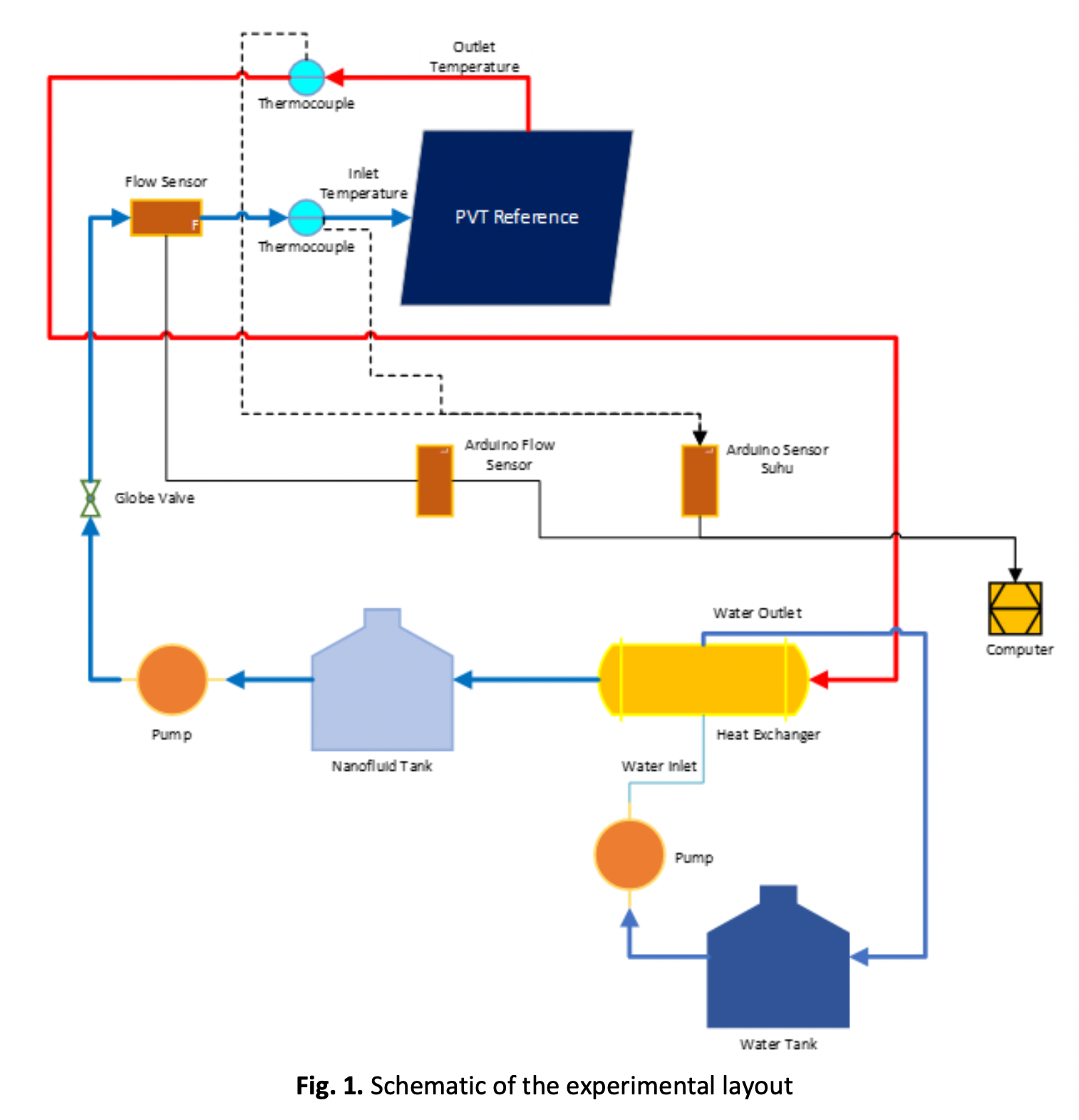Efficiency of a Photovoltaic Thermal (PVT) System using Bio-nanofluid based on Virgin Coconut Oil-Graphene with Additive Surfactant: An Experimental Study
DOI:
https://doi.org/10.37934/araset.34.2.287304Keywords:
Photovoltaic/thermal system, bio-nanofluid, flow rate, heat transfer, efficiencyAbstract
This study explores the efficiency of photovoltaic thermal (PVT) system using bio-nanofluid based on virgin coconut oil (VCO). This research proposes bio-nanofluid as dispersion media because of their potential in medium to high temperature applications in terms of thermal output, biodegradable, and renewable. Graphene nanoplatelets (GNP) were prepared in a mass fraction of 0.1% wt. Then, the ratio for the surfactant was a 1:1 nanoparticle. The surfactants used in this study were Polyvinylpyrrolidone (PVP), Sodium dodecyl sulfate (SDS), and Cetyltrimethylammonium bromide (CTAB). The two-stage method was used for the bio-nanofluid synthesis. Further, the samples were tested for physical and thermophysical properties. From the stability test, we discovered stable dispersion from VCO-GNP-PVP bio-nanofluid sample during the 30 days of testing. The bio-nanofluid samples also presented an increase in thermal conductivity following its stability, with the highest conductivity value (0.158 W/m.K) observed on the VCO-GNP-PVP sample. The efficiency test results on additive surfactant and flow rate show the optimum flow rate of 7 mL/s on VCO-GNP-PVP bio-nanofluid, with thermal and electric efficiency of 25.169% and 8.632%, respectively.





























